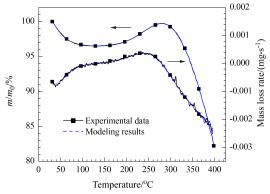1 Wang, H.-H.; Dlugogorski, B. Z.; Kennedy, E. M. Prog. Energy Combust. Sci. 2003, 29, 487.

2 You, W.-S.; Qi, Z.-L. Saf. Coal Mines 2006, 12, 16 (in Chinese). (尤文顺, 亓中立, 煤矿安全, 2006, 12, 16.)
3 Clemens, A. H.; Matheson, T. W.; Rogers, D. E. Fuel 1991,70, 215.

4 Krishnaswamy, S. K.; Gunn, R. D.; Agarwal, P. K. Fuel1996, 75, 344.

5 Sondreal, E. A.; Ellman, R. C. RI 7887, US Bureau of Mines, 1974.

6 Wang, H.-H.; Dlugogorski, B. Z.; Kennedy, E. M. Combust. Flame 2002, 131, 452.

7 Kam, A. Y.; Hixson, A. N.; Perlmutter, D. D. Chem. Eng. Sci. 1976, 31, 821.

8 Kam, A. Y.; Hixson, A. N.; Perlmutter, D. D. Chem. Eng. Sci. 1976, 31, 815.

9 Crelling, J. C.; Hippo, E. J.; Woerner, B. A.; West, D. P. Fuel 1992, 71, 151.

10 He, Q.-L.; Wang, D.-M. J. Univ. Sci. Technol. Beijing 2006,28, 1 (in Chinese). (何启林, 王德明, 北京科技大学学报, 2006, 28, 1.)
11 Lu, W.-D.; Wang, J.-R.; Deng, C.-B.; Shan, Y.-F.; Hong, L.; Deng, H.-Z. Expr. Inf. Min. Ind. 2007, 462, 45 (in Chinese). (陆卫东, 王继仁, 邓存宝, 单亚飞, 洪林, 邓汉中, 矿业 快报, 2007, 462, 45.)
12 Zhan, J. Ph.D. Dissertation, University of Science and Technology of China, Hefei, 2012 (in Chinese). (战婧, 博士论文, 中国科学技术大学, 合肥, 2012.)

13 Wu, Y.-W.; Dollimore, D. Thermochim. Acta 1998, 324, 49.

14 Manyà, J. J.; Velo, E.; Puigjaner, L. Ind. Eng. Chem. Res.2003, 42, 434.

15 Hu, S.; Jess, A.; Xu, M.-H. Fuel 2007, 86, 2778.

16 Barneto, A. G.; Carmona, J. A.; Alfonso, J. E.; Alcaide, L. J. Bioresour. Technol. 2009, 100, 3963.

17 Caballero, J. A.; Font, R.; Marcilla, A.; Conesa, J. A. Ind. Eng. Chem. Res. 1995, 34, 806.

18 Abhari, R.; Isaacs, L. L. Energy Fuels 1990, 4, 448.

19 Brady, M. E.; Burnett, M. G.; Galwey, A. K. Fuel 1994, 73,1343.

20 Wang, H.-H. Energy Fuels 2007, 21, 3070.

21 Kuchta, J. M.; Rowe, V. R.; Burgess, D. S. RI 8474, US Bureau of Mines, 1980.
22 Smith, A. C.; Lazzara, C. P. RI 9079, US Bureau of Mines,1987.
23 Martin, R. R.; MacPhee, A. J.; Workinton, M.; Lindsay, E. Fuel 1989, 68, 1077.

24 Jones, J. C. Fuel 1997, 76, 1169.

25 Kaji, R.; Hishinuma, Y.; Nakamura, Y. Fuel 1985, 64, 297.

26 Kelemen, S. R.; Freund, H. Energy Fuels 1990, 4, 165.

27 Wang, H.-H.; Dlugogorski, B. Z.; Kennedy, E. M. Fuel2002, 81, 1913.

28 Petersen, H. I.; Rosenberg, P.; Nytoft, H. P. Int. J. Coal Geol. 2008, 74, 93.

29 Kidena, K.; Adachi, R.; Murata, S.; Nomura, M. Fuel 2008,87, 388.



























